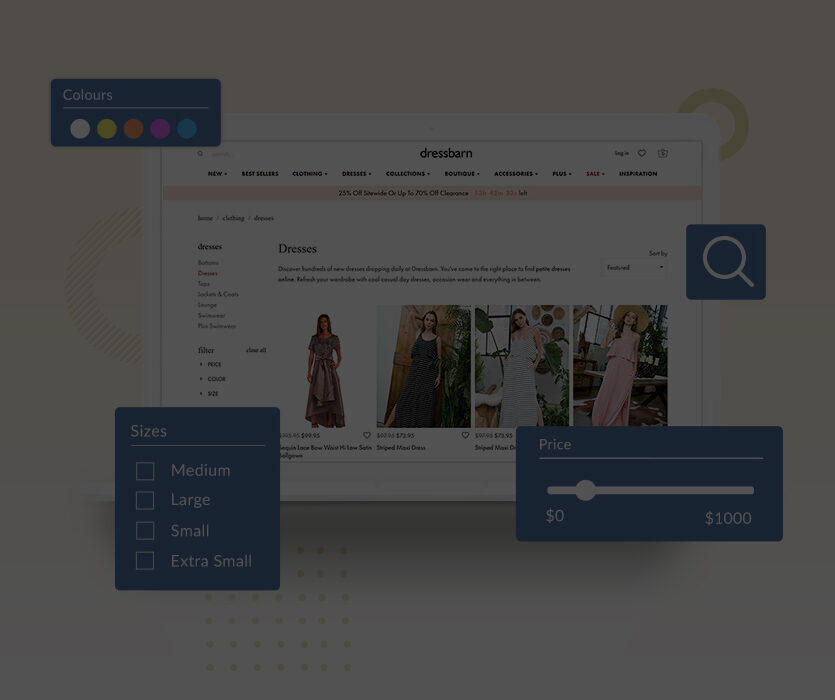Blog
How to Boost eCommerce Conversions with Effective Segmentation Strategies
Driving traffic to your website is crucial, but what really determines ecommerce success is your ability to convert that traffic into loyal customers. One of the most effective ways to boost conversion rates is through segmentation. By dividing your audience into smaller, more specific groups, you can deliver personalized content and offers that resonate with their unique preferences and behaviors.
In this blog post, we’ll explore segmentation strategies, the role of website data in enriching your segments, and how to use timely campaigns to capture potential buyers. Let’s dive into the essentials of segmentation and how you can leverage Klevu’s integration with Klaviyo to optimize your marketing efforts.
What is Segmentation and Why Does it Matter?
Segmentation is the process of dividing your audience into distinct groups based on specific characteristics, such as demographics, behavior, or product preferences. By doing so, you can create more tailored marketing campaigns, increasing the relevance of your message and ultimately driving higher conversion rates.

The Basics of Segmentation
There are three primary types of segmentation that every eCommerce business should consider:
- Demographic Segmentation – This method involves categorizing customers based on factors such as location, gender, or preferences gathered through surveys. For instance, if you run a fashion site in the U.S., segmenting customers by location allows you to show them weather-appropriate clothing. Keep in mind that while demographic segmentation is powerful, it’s essential not to over-generalize and make assumptions about your customers.
- Behavioral Segmentation – Understanding customer behavior on your website can provide valuable insights. By tracking browsing habits, search history, and past purchases, you can create segments for customers who are actively engaged but haven’t yet made a purchase. You can then send them personalized product recommendations or exclusive discounts to prompt them to convert.
- Affinity Segmentation – With Klevu’s integration with Klaviyo, you can go even further by segmenting customers based on their product preferences and search behavior. For instance, if a user frequently searches for a specific category, such as “running shoes,” you can create a segment that targets them with relevant offers or product suggestions.
Pro Tip:
Combine behavioral and affinity segmentation to create highly personalized, high-value segments that align with your conversion goals. By using both strategies, you’ll be able to tailor your marketing efforts more effectively.
How to Enrich Your Segments with Website Data
Once you’ve mastered basic segmentation, it’s time to take it to the next level by enriching your segments with website data. Klevu’s integration with Klaviyo makes it easy to leverage valuable insights from customer interactions to create even more powerful segments.
1. Track Search Behavior
Search data is a treasure trove of customer intent. If a customer frequently searches for specific products but hasn’t made a purchase, you can create a segment that targets them with tailored offers. For example, if “running shoes” is one of your highest-searched terms, you can automatically segment shoppers who search for this but haven’t purchased in the last 30 days, sending them a special offer or an inspirational email to help them convert at full price.
2. Monitor Abandoned Browse Data
Customers who browse your site without adding items to their cart are prime candidates for retargeting. By segmenting users who exhibit this behavior, you can send them timely product reminders or promotional offers to re-engage them and drive conversions. The Cambridge Satchel Co., for instance, saw significant success by leveraging browse abandonment data to increase conversions.
3. Leverage Product Views and Engagement
You can also create segments based on which products users view or interact with. If a customer is consistently viewing high-ticket items, such as luxury furniture, you can create a segment that offers them targeted promotions to entice a purchase.
Pro Tip:
Use dynamic segments that update in real-time based on customer interactions. This ensures that your marketing campaigns remain relevant and timely, increasing the likelihood of conversion.
Sending Timely Campaigns to Recover Lost Conversions
One of the most critical strategies for boosting conversions is sending timely campaigns. By targeting customers who have abandoned searches or browsing sessions, you can recover lost sales and turn potential buyers into actual customers.

1. Abandoned Search Campaigns
Shoppers who search are typically high-intent customers. However, if they don’t convert immediately, it’s crucial to follow up quickly. You can automate abandoned search campaigns with Klevu’s integration within Klaviyo, sending personalized emails or SMS to remind them of their search and encourage them to complete their purchase.
2. Abandoned Browse Campaigns
Similarly, abandoned browse campaigns allow you to re-engage customers who browsed products without taking action. Sending a reminder email featuring the products they viewed can be an effective way to drive conversions from these passive browsers.
3. Leverage Timing for Maximum Impact
Timing is everything when it comes to abandoned search and browse campaigns. Set shorter trigger windows for search abandonment since these customers often demonstrate higher purchase intent. By ensuring your follow-up is both timely and personalized, you increase the chances of converting these users into buyers.
Pro Tip:
Incorporate dynamic content in your emails that showcases the exact products or categories the customer interacted with. This personalized approach ensures that your message is relevant and engaging.
Personalizing Product Recommendations with Segmentation
Once you’ve implemented effective segmentation strategies and sent timely campaigns, the final step is to personalize your website’s product recommendations. Tailoring product suggestions based on customer segments can significantly increase engagement and drive higher conversions.
1. Use Affinity Segments for Targeted Product Suggestions
By creating segments like “Nike Fans” or “High CLV Group,” you can personalize your homepage and product pages to feature items that align with their preferences. The Cambridge Satchel Co. saw a 64% increase in conversions by using personalized banners tailored to customer segments.
2. Target Returning Customers
Recognize returning visitors based on their previous behavior and recommend products relevant to their interests. For example, if a shopper frequently views homeware items, your product recommendations should prominently feature items from that category.
3. Cross-Sell Based on Purchase History
Use Klevu’s Smart Recommendations to cross-sell complementary products based on a customer’s previous purchases. This keeps customers engaged and encourages additional purchases.
Pro Tip:
Place recommendation blocks strategically across your site, such as below the hero image, on product pages, or even in the shopping cart, to maximize visibility and encourage conversions.
Conclusion
By mastering segmentation strategies, enriching your segments with website data, and sending timely campaigns, you can create highly personalized marketing efforts that resonate with your audience and lead to higher conversions. Leveraging Klevu’s powerful integration with Klaviyo ensures that you’re using real-time data to make informed decisions, providing a seamless shopping experience that keeps customers coming back.
Interested in seeing how Klevu and Klaviyo can help your business grow? Schedule a demo today! Or if you’re already a Klevu and Klaviyo customer, get started in a few clicks here.


